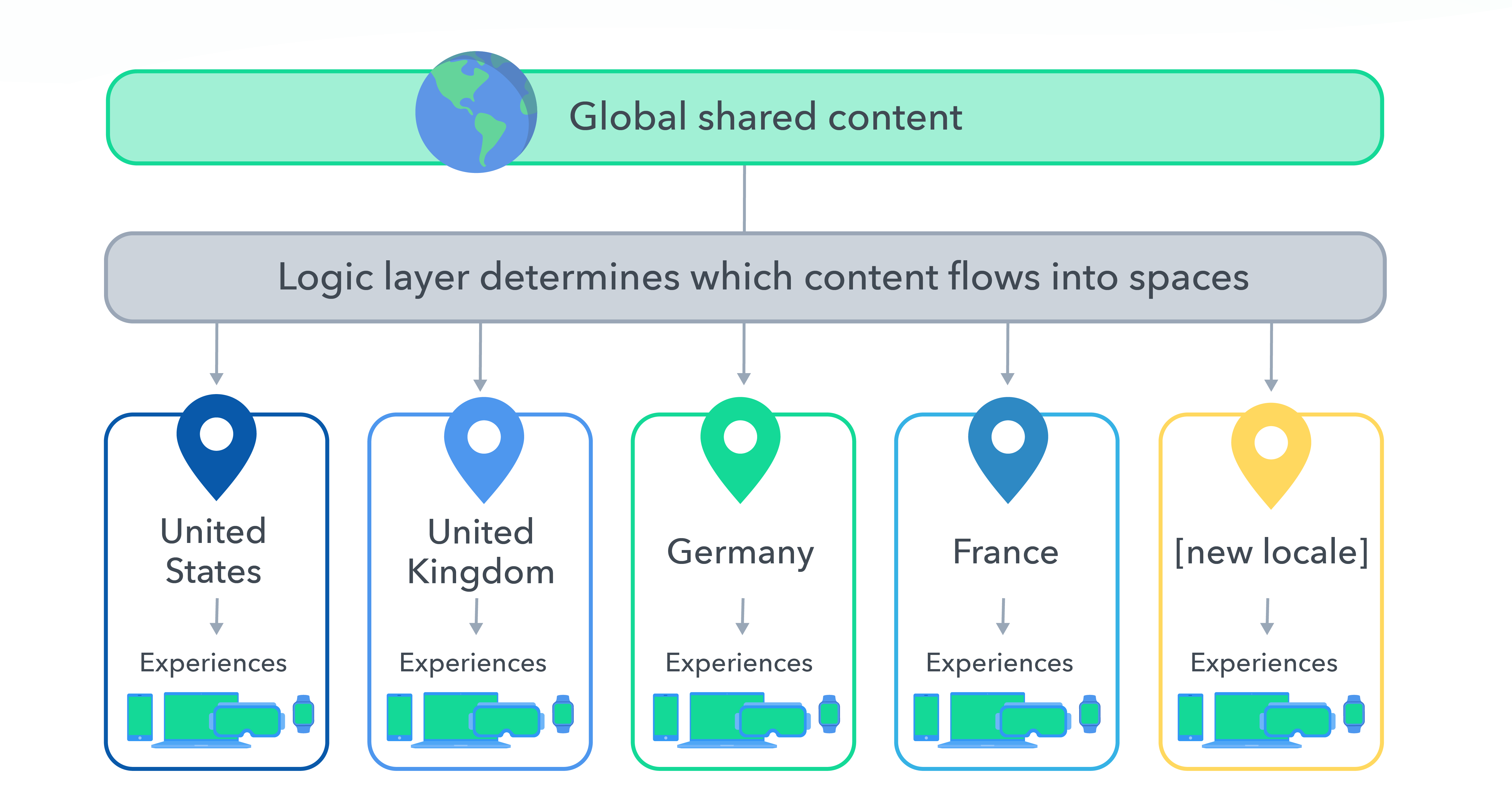How to implement a local and global content strategy

Almost all major companies now have a global presence, but operating on a global scale comes with a specific set of challenges. One of the primary dilemmas is whether to standardize content or adapt it to various markets. Standardization brings brand consistency to the fore, while adaptation acknowledges that different regions and markets have different audiences.
As part of the Solution Services team at Contentful, we help solve interesting challenges like this one and help our enterprise customers and partners to help them realize their goals. This post covers the outcomes of working closely with one of our customers — which has brick-and-mortar stores in 40 countries — to develop a content strategy that is both global and local.
Abhishek Kumar, a solution architect from Contentful’s partner Deloitte Digital, specializes in content management. He’s been working with our customer to learn how they’re developing their strategy, and how they are implementing a hybrid strategy to combine both standardization and localization in their content strategy.
Abhishek says, “The customer believes creating global content and simply translating is not enough. Each region is a specialist in their market that understands local nuances and cultural differences — they are centres of excellence. However, at the same time they did not want to risk their brand identity, tone of voice and content quality by giving carte blanche to every region — their overarching global marketing still applied.”
The architecture
The customer needed to answer some critical questions: How will we design our content infrastructure? How does our architecture enable our strategy? “After having an on-site consultation with your team [Solution Services EMEA], we decided to use a multi-space strategy,“ says Abhishek.
The cornerstone of this architecture is a global space which contains all the content for all regions. Then, each region has its own space populated with content from the global space.
This architecture has some important advantages, as Abhishek explains. “With each market having its own space, the content creators in those markets only need to have access to that single space — they don’t need to worry about accessing or changing content that doesn’t belong to them, or that another market might change their content. They just access what they need and make any changes they desire to their local space. This gives regions full autonomy without any governance complexities, ensures scalability and reduces front-end complexity.”

This is a great example of treating content architecture as code. The customer created a full-page app that manages content synchronisation across multiple spaces. The app allows content managers to select one or more content types to automatically synchronise to a regional market space when published, unpublished, archived or unarchived.
Through this app, they manage the creation of webhooks to a cloud function that then takes care of the syncing operation.
The cloud function itself also checks:
If the content type exists (if not, it creates it)
If the content type is up to date with the global source space (if not, it updates it)
If the market space already has the content already localized (if so, it doesn’t overwrite it)
Any necessary migration step is performed automatically before applying any content changes
With this setup in place, the consistency of the content model is ensured across the markets. All of the required content is also immediately available when the global market is ready. This speeds up the content creation process and reduces the possibility of human error while replicating content into the specific markets.
Measuring success
The customer aimed to reuse 80% of their global content, giving the regions leeway with 20% of content to adapt to local markets. This let them achieve the best of both worlds — global strategy and local execution.
Abishek explains: “In order to visualise it, we created a script that monitors the content across our Contentful spaces versus our global space for localization, then we use that data to populate a dashboard where we can observe the metrics.”
Further possibilities
There are plenty of possibilities to take this strategy even further. “We’re currently working on implementing our custom AI-based translation pipeline, so that content is automatically translated by our service and updated in Contentful, then propagated across our different market spaces,” notes Abhishek.
Implementing A/B testing at a global- versus local-market level is another possibility. Experiment to find out which localisations really resonate with a local audience, and which are better left as original global marketing content.
Creating reports on this data is another possibility. Is a certain content type more often localized? For example, product descriptions or images? Maybe this information could help markets understand which particular pieces of content perform best when localized, and an outcome could be to require that particular types of content are always localized.
Balancing global content with localized content is key for success in local markets, and we here at Contentful believe that a multi-space strategy gives you the best framework for success.
If you’re looking into improving your content strategy or implementing your content architecture vision, the Solution Services team is the go-to resource for enterprise customers and our partners to achieve their goals. We offer tailored onboarding experiences as well as custom workshops that fit your exact needs. We’re looking forward to hearing from you.




